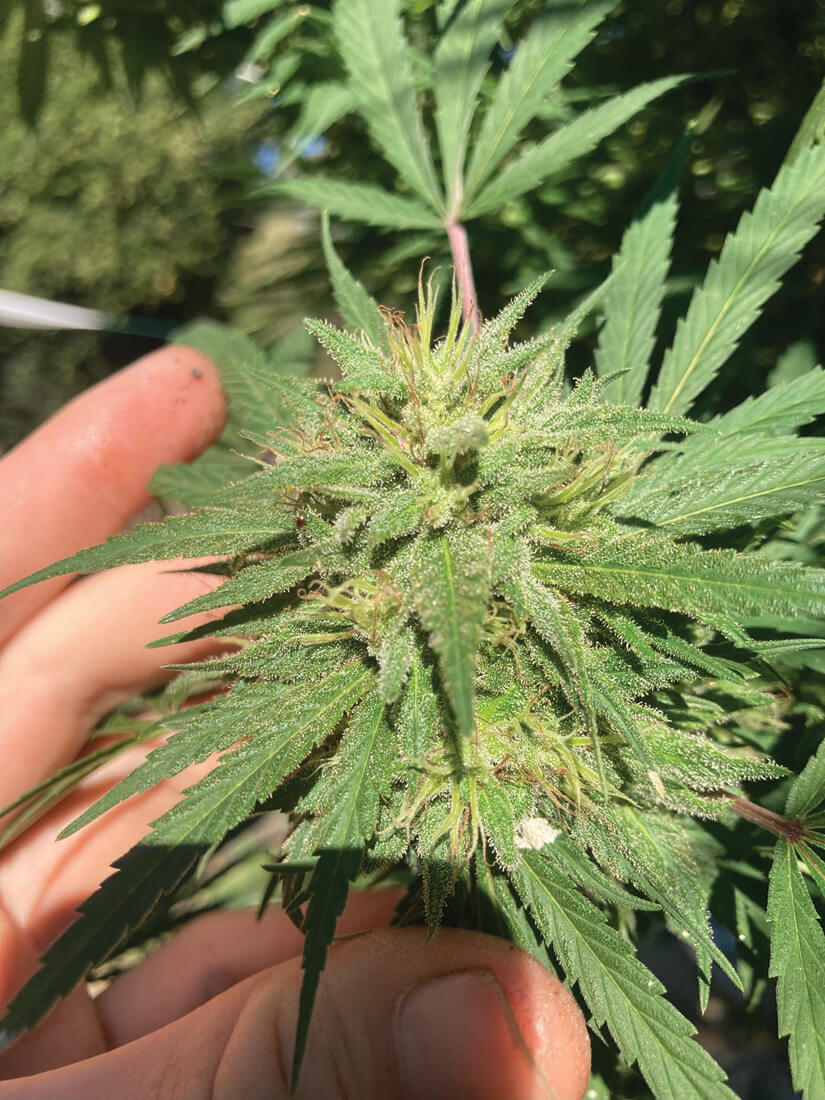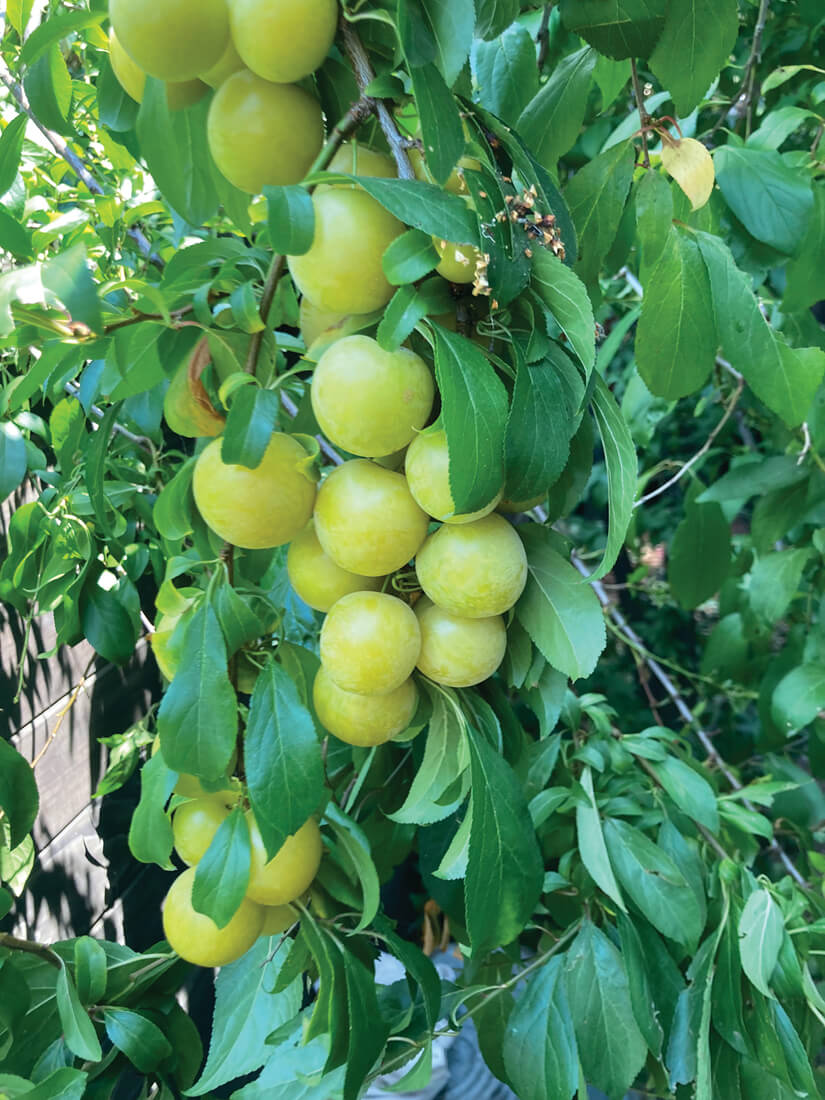Harvesting & Preserving Abundance | |
Harvesting & Preserving AbundanceAs the growing season approaches its conclusion, Mother Nature seems to put more pressure on plants to complete their cycles.
Harvest season is upon us… saving your crop for later can be a labor of love!
With shorter days and cooler nights, the plants we’ve tended all summer are ready to ripen. Mother Nature’s signals remind plants that the growing season is coming to a close and it’s time to complete the year’s production. While watching plants grow is satisfying, utilizing the fruits of your labor is the whole reason you’ve planted a crop in the first place. Whether you’re growing tomatoes, cucumbers, or cannabis, harvesting is the most important and rewarding step in the process. (Above) Standing over 10 feet tall, this sun grown Topangan cannabis plant stretches towards the sky. The tall branches are a great place for moths and butterflies to land and lay their eggs. (Top right) Hiding inside a healthy flower this caterpillar leaves a path of destruction. As caterpillars chomp through buds they leave open wounds, which can quickly turn to mold, ruining an otherwise beautiful flower. A careful harvest is required to remove all damaged buds. (Bottom right) This Sun-grown, organic cannabis flower growing in Topanga is covered in sticky resin glands. Topanga has a perfect climate for growing cannabis outdoors. |
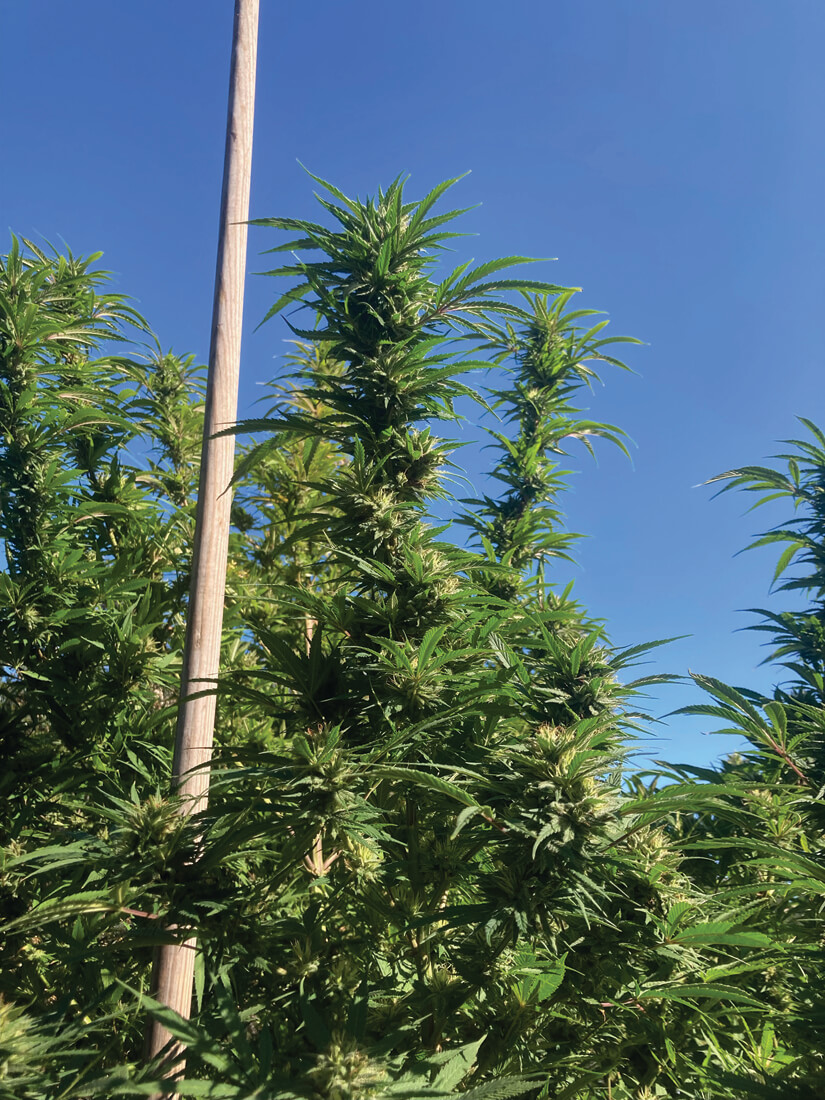 Chances are if you grew a large plant in your garden, it doesn’t matter what type, it’s produced a larger crop than you can consume when it’s fresh and ripe. Harvesting an entire crop can be a very time consuming, and labor intensive process. Whether you’re turning your tomatoes to sauce, canning jars of homemade pickles, making plum preserves, or carefully curing your cannabis, the preservation process is the most essential for the future enjoyment of your crop. Picked fresh, fruits and veggies generally don’t stay good for long. Without proper preservation techniques, or lots of neighbors to share with, the chances of your harvest going to waste are pretty high.
Learning the best way to preserve what you’ve grown is the key to complete enjoyment of your garden. Properly jarring up what you grow allows you to enjoy it for months or even years. While fruit and vegetable growers turn their crops into tasty foods, dedicated cannabis growers focus on the process of curing their buds, or turning them into hash.
Processing Cannabis
Curing is the process of allowing the slow release moisture to preserve the smells and flavors of cannabis. Hash is the result of a process aimed at separating the plant’s resin glands from chlorophyl-rich plant matter. Performing these tasks well is the most important part of producing quality cannabis. With the legalization of cannabis, commercial production increases have resulted in larger batches of poorly cured cannabis available to consumers. Small-batch, homegrown, properly cured cannabis is the best quality available these days.Â
 | 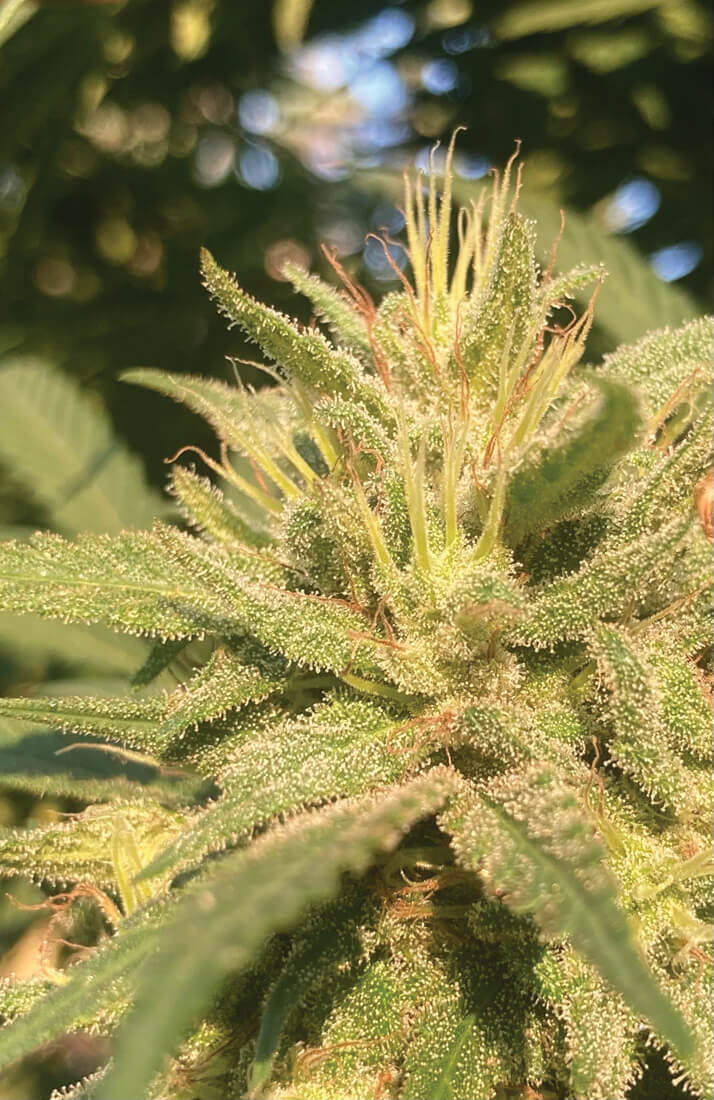 If you’ve got buds growing, choosing the best time to harvest is a very important step for ensuring quality. Most sun-grown cannabis ripens sometime in ‘Croptober’ though some strains finish earlier or later than others. Watching buds for any signs of degradation can be helpful to choosing the best harvest date for each plant. Reaching peak ripeness, Insect infestation, reduction of resin and terpene production, or mold growth from a passing storm that lingered for too long, can all be factors in choosing when to harvest.Â
Sometimes plants will reach a point where a complete harvest it required. This can happen when fruits start becoming over-ripe and start to rot. It happens to cannabis plants if caterpillars burrow through the buds and their tracks turn to mold. If you catch a few caterpillars on your buds, there are surely more. Surrounded by nature, this can easily happen in Topanga and is often overlooked until it’s too late.
Once chopped down, reducing the moisture levels in the buds is the first step in curing quality cannabis. Choose a cool, dark, dry, well ventilated spot to hang-dry your buds until their leaves are dry and the stems snap when bent.
 | 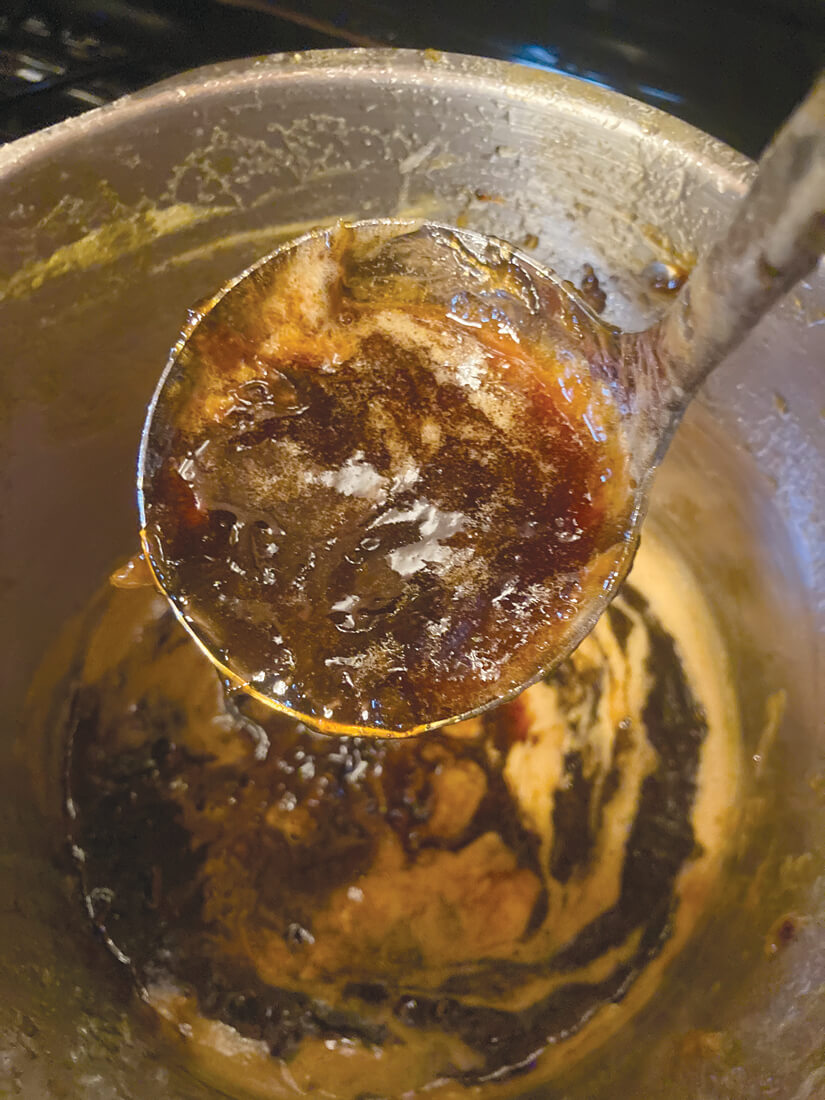 Curing can be done before or after trimming the leaves from the buds. I prefer to cure with leaves on, as they seem to protect the buds from excessive air exchange and trichomes shaking off. The process of curing involves storing your buds in a sealed container and opening it regularly to release and exchange the air around the buds. This process allows for a slow, even redistribution of the moisture contained inside the flower. If cured well, your buds should burn slowly and evenly, and provide a smooth flavorful smoke. Curing properly can take several weeks to several months depending on the strain, density, and size of your buds.Â
If your fruits or buds start to decay, it’s important to act fast to save what you can. Freezing everything can help buy you time for processing. Fresh fruits or dried buds may not be an option anymore, but making delicious preserves, or dank hash may be a better option anyway. Taking your harvest to the next level takes skill and dedication to do properly, but a crop on the verge of failure can lead to some amazing results! Well-made hash, delicious preserves, and homemade pickles can make any harvest more enjoyable, and if made properly they can last for over a year.  | 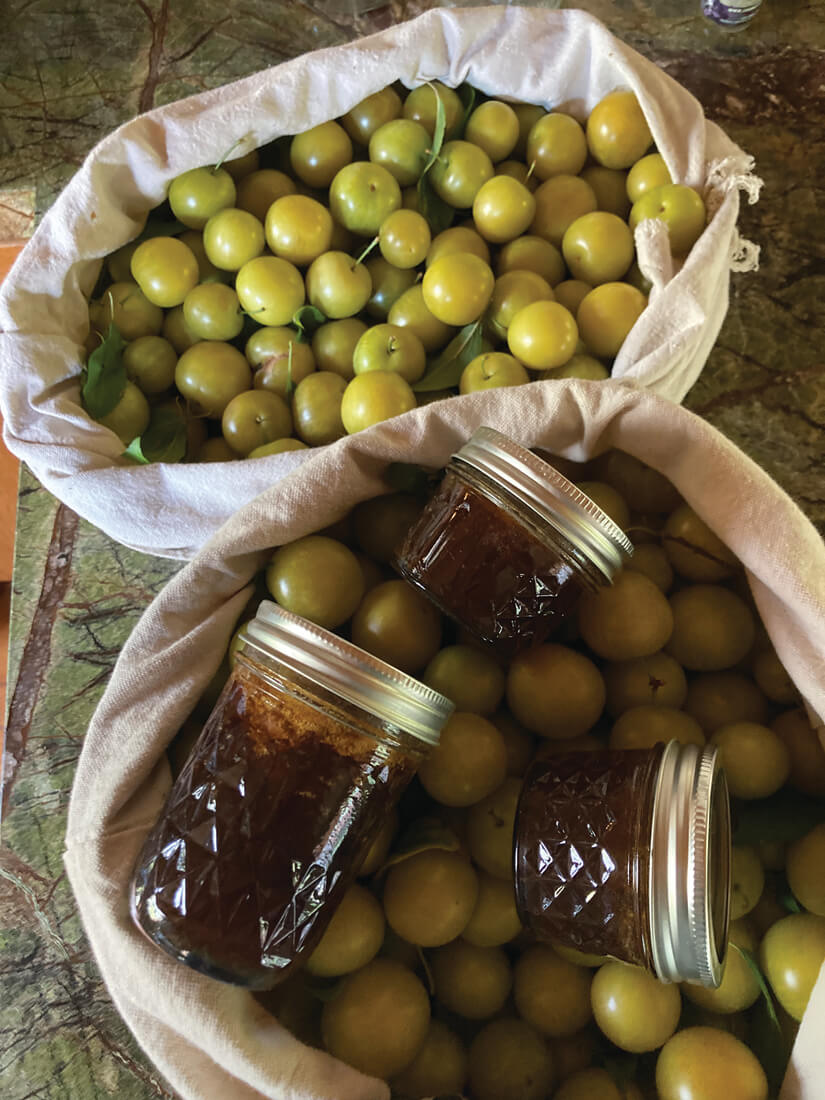 A bonanza plum harvest went from gathering to processing to a large store of winter preserves for family and friends. Four different batches of preserves. The fruit changes color when cooked, and different heating methods creates slight variations in color and flavor. | | | | | | | | | | | |
|
|
|
|
|




